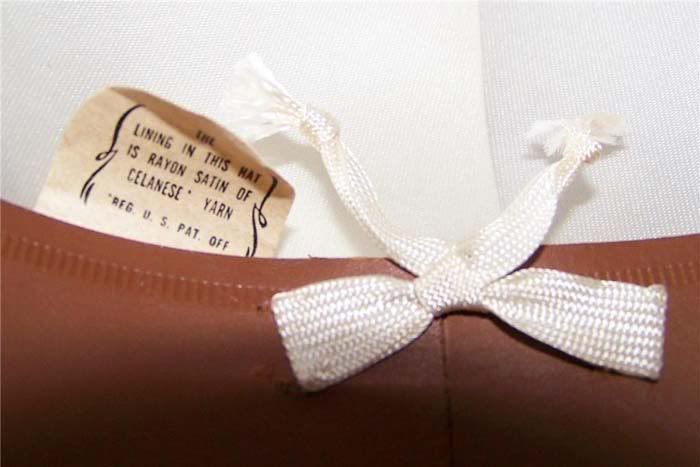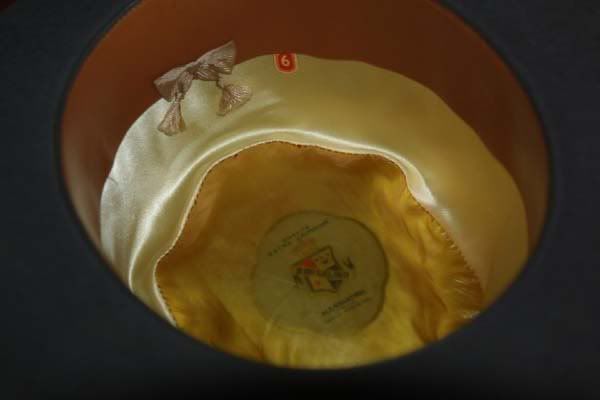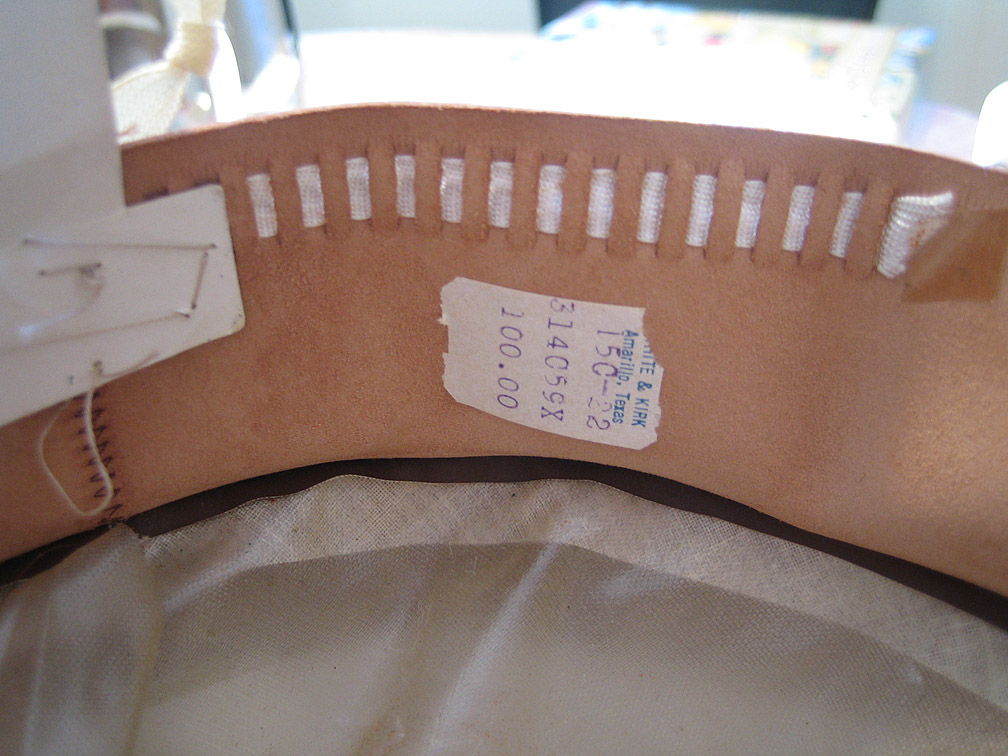Brad Bowers
I'll Lock Up
- Messages
- 4,187
The Elizans said:...I would not advocate using this distinction as a reference for dating vintage hats.
At least, not for European hats, we decided. The method works much better for American hats.
Brad
The Elizans said:...I would not advocate using this distinction as a reference for dating vintage hats.
majormoore said:I have a case of those things, also they used smaller pieces to help hold the keeper on the bow/ribbon in place.
Major Moore
Ale, this roll dates back many years... I'm afraid to guess, but sometime from my years right after art school. No sign of a maker. Let me send you a little and you can test it. I'm sure Pearl Paint or Lee's would have something very similar.
Well, at least it appears to be an anomaly vis-a-vis vintage Stetsons -- but, as a more general matter, I'm not so sure...
Here's what I'm talkin' about...I have one vintage Stetson (my Amon Carter/Shady Oak OR) that has a sweatband that is not stitched together at the back of the hat (under the little bow, where the two ends of the sweat meet). Instead, the two ends are secured together by a piece of tape in back of the sweat, providing for a seamless effect. This photo gives you the idea:

I have one other lid with this same feature, a vintage Borsalino:

Baron Kurtz has pointed out in another thread that he has vintage Borsalinos where the sweat is joined in the above fashion.
So, this leads to a number of questions. First, is the "tape" method of joining the sweat tied to a particular time period? For example, was this a technique that, by definition, was used in the '30s/40's, for example, or did it extend beyond that time period? Did particular manufacturers use this technique, whereas others did not? What was the underlying rationale for this technique -- was it aesthetic? functional?
Any thoughts?
Cheers,
JtL

Like this?
This feature was incorporated in Stetson sweatbands in the 1930s and made a reappearance in the 1960s, as in this Stetson 100. This second coming is likely the time period of your 7XCB50. I would guess it is a decorative reference to early sweats that used lacing to adjust the fit of the hat.
This 4 year old thread was discussing a rear sweatband seam that is taped rather than sewn closed. Older American hats, for instance, 1920s derbies show this feature. It is found in more recent years in lightweight Borsalinos and European hats.
 John Lofgren Monkey Boots Shinki Horsebuttt - $1,136 The classic monkey boot silhouette in an incredibly rich Shinki russet horse leather.
John Lofgren Monkey Boots Shinki Horsebuttt - $1,136 The classic monkey boot silhouette in an incredibly rich Shinki russet horse leather.  Grant Stone Diesel Boot Dark Olive Chromexcel - $395 Goodyear welted, Horween Chromexcel, classic good looks.
Grant Stone Diesel Boot Dark Olive Chromexcel - $395 Goodyear welted, Horween Chromexcel, classic good looks.  Schott 568 Vandals Jacket - $1,250 The classic Perfecto motorcycle jacket, in a very special limited-edition Schott double rider style.
Schott 568 Vandals Jacket - $1,250 The classic Perfecto motorcycle jacket, in a very special limited-edition Schott double rider style.